Buyer’s guide: Teat disinfection technology
As herd sizes increase and labour sourcing continues to create challenges, more farmers are turning to automated teat disinfection technologies to ease pressure in the parlour and promote efficiencies.
Although manual teat spraying has the potential to work well, a farm study carried out by The Dairy Group showed that not all farms were able to hit the target 80% of the teat barrel covered by disinfectant.
In fact, coverage varied from 18% to 80% on the 10 farms examined.
If consistency is an issue on farm, the first thing to do is to motivate and train staff to improve performance.
However, if that fails, an automated system may be the answer.
See also: Video – 15 steps to best-practice drying off protocol
Automation also has the potential to aid labour efficiencies.
For example, teat brushes can help reduce the number of passes per cow at milking, while automatic dipping and flushing systems can speed up milking and robots could eliminate a labour unit.
With a wide variety of system choices available, product selection will vary depending on a number of factors, including parlour type and whether you want a pre and/or post-disinfectant system.
We take a look at the options available and see how they compare on cost and ability:
This buyer’s guide reviews:
The Teat Scrubber
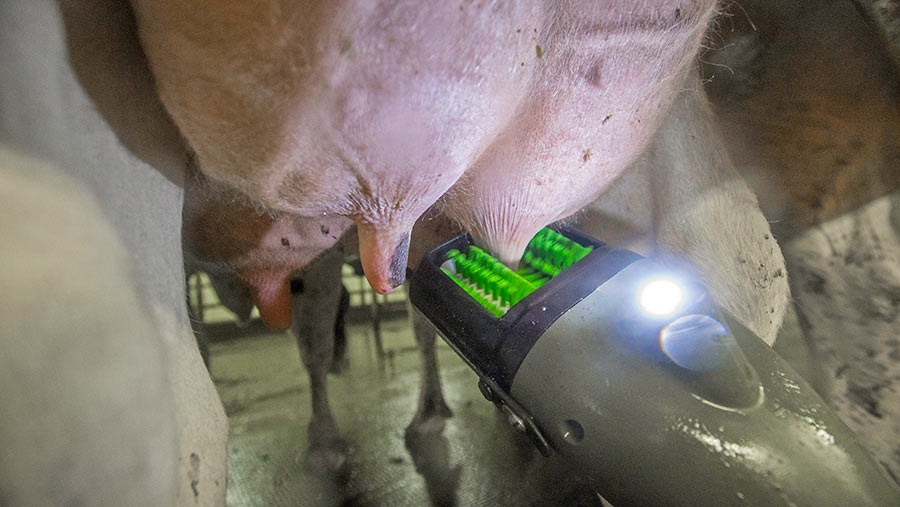
Who supplies it? Future Cow
What is it? Hand held teat brush system which stimulates, cleans, disinfects and dries in one pass. Operated by hand switch with light to illuminate teats.
Pre or post milking disinfection? Pre
How does it work? Teat is cleaned by three rotating antimicrobial brushes – two at the top wash barrel, one at the bottom washes teat end. Wet cycle can be followed by dry cycle.
Parlour type: Any
Can it be retrofitted? Yes
How long does it take? 6-10 seconds/cow for whole process.
Average disinfectant use per cow: 4.25ml/cow of base and activator (85ml total volume including water)
Can you use any disinfectants with it? Specific chlorine dioxide disinfectant must be used to receive full support.
Warranty: 12 months or 200,000 cows
Cost (excl VAT): Starts at £5,000. Replacement brushes £8 each (advise changing every 10,000 cows).
Key considerations for system type: Consider brush replacement costs. Dry pass recommended to help promote effective liner seal and avoid new mastitis infections.
Contact: futurecow.com Derek Davies, Tel: 07887 737089
On-platform Teat Sprayer
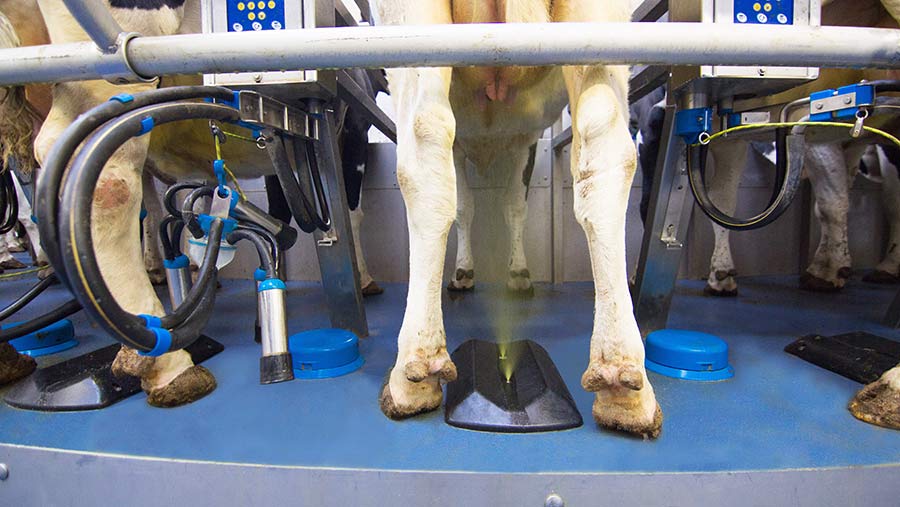
Who supplies it? Dairymaster
What is it? Individual bale, platform mounted leg spreaders with automatic disinfection nozzle.
Pre or post milking disinfection? Pre and/or post
How does it work? Two seconds after the automatic cup removers (ACRs) are activated, the sprayer automatically sprays the teats via two nozzles. Only one spray line so same disinfectant will have to be used when pre and post spraying.
Parlour type: Rotary
Can it be retrofitted? Yes
How long does it take? 0.5+ seconds/cow (can be varied)
Average disinfectant use: 15ml/cow
Can you use any disinfectants with it? Yes but must be suitable for spraying. Iodine not recommended
Warranty: 12 months on parts
Cost (excl VAT): From £200/unit
Key considerations for system type: Can separate pre and post disinfectants be applied? ACRs needed to post-spray on some systems. Pre-spray works best with platform sensor, and electronic ID needed. Position on platform is crucial for good coverage for individual herd.
Contact: dairymaster.com Chris Howarth, Tel: 01527 878505
Apollo
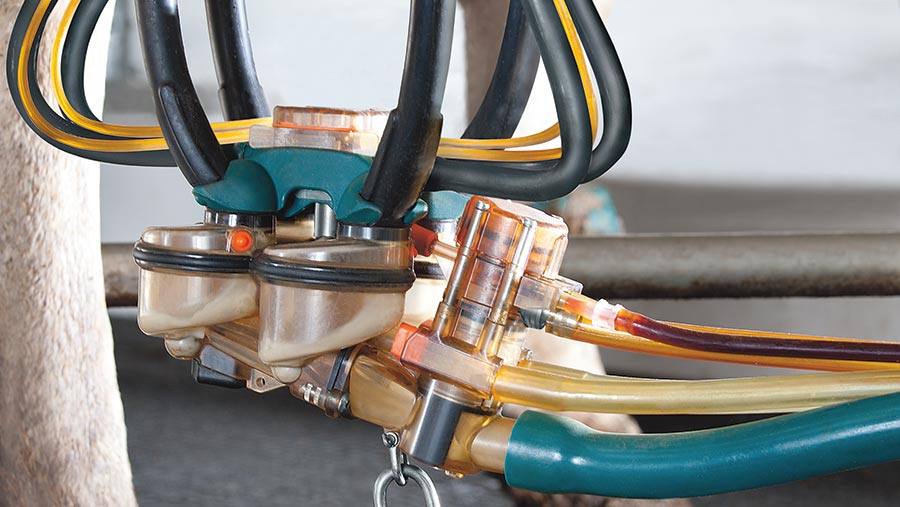
Who supplies it? GEA
What is it? Automatic post dip and cluster flush system using specialist milking clusters. Designed to disinfect teats and clean liners between cows
Pre or post milking disinfection? Post
How does it work? Post dip enters liner at the hood at the end of milking and is dragged down teat when cluster removed. Cluster then flushed with disinfectant and then water. Have to use Apollo clusters and liners.
Parlour type: Any
Can it be retrofitted? Yes
How long does it take? 2 seconds/spray, about 60 seconds for flushing.
Average disinfectant use per cow: 11-12ml/cow
Can you use any disinfectants with it? GEA chemical advised in first year to ensure warranty valid.
Warranty: 12 months
Cost (excl VAT): £1,600/point
Key considerations for system type: May have to use specific liners on some systems.
Contact: gea.com Tel: 024 7669 2333
TSR
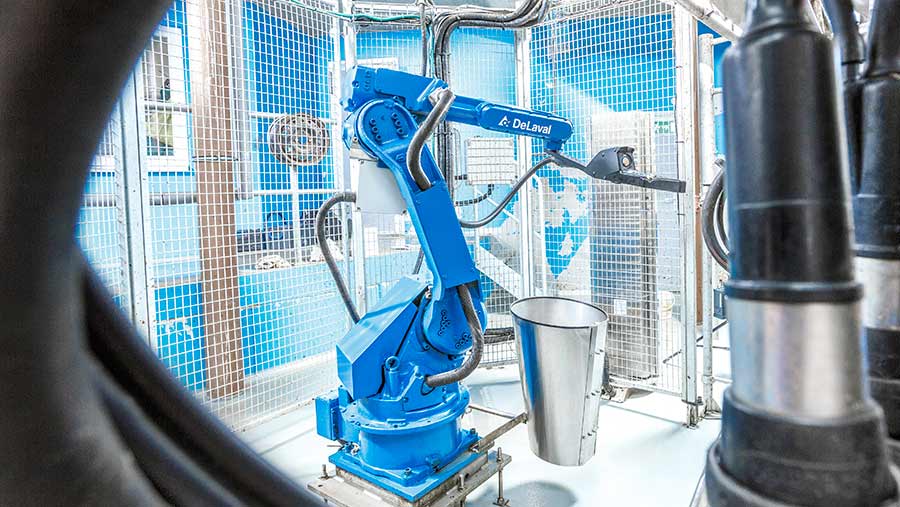
© Bjorn Qvarfordt
Who supplies it? Delaval
What is it? Automated robot
Pre or post milking disinfection? Pre and/or post (post more popular)
How does it work? Robotic arm with camera identifies each teat so each can be automatically sprayed individually. Works across 1.5 bales and automatically washes arm between pre-programmed number of cows. Can be positioned on entry or exit from parlour.
Parlour type: Rotary
Can it be retrofitted? Yes. Non-Delaval rotaries may need additional upgrades.
How long does it take? >400 cows per hour (fastest – 9 seconds/bale)
Average disinfectant use per cow: 8-10ml/cow
Can you use any disinfectants with it? Can use any chemical but extra costs may be incurred if blockages occur due to non approved chemical .
Warranty: 12 months standard. Extended options available
Cost (excl VAT): Price will vary depending on farm. Claims ROI of around 3-4 years based on 6 hour milkings/day
Key considerations for system type: Will need two robots to do pre and post. Can take up a lot of space.
Contact: delaval.com Tel: 029 2077 5800
SR2
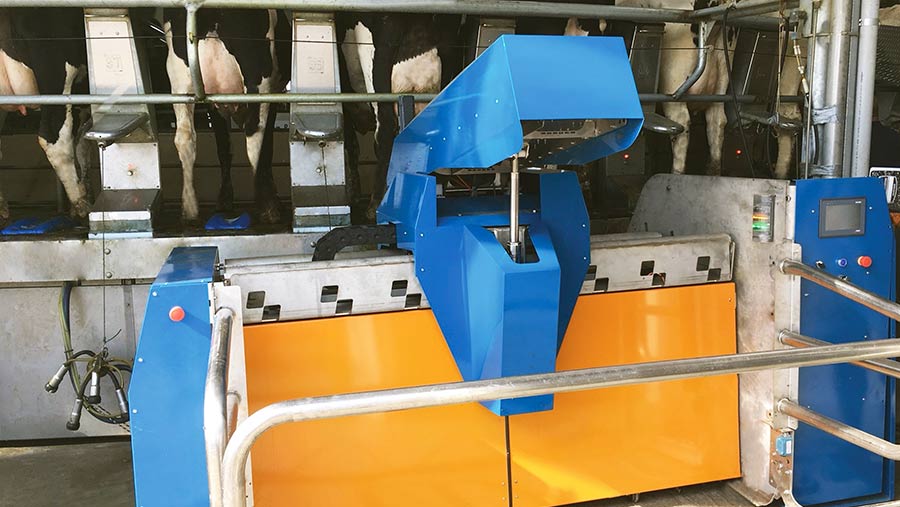
Who supplies it? Boumatic
What is it? Automated robot
Pre or post milking disinfection? Pre and/or post (post more popular)
How does it work? 3D camera identifies if cluster is attached and identifies teats. Spray arm has 2 jets – 1 sprays left teats, one sprays right teats. Height and depth of arm varies depending on cow. Works across 1.5 bales.
Parlour type: External rotaries
Can it be retrofitted? Yes
How long does it take? Can work up to 4 seconds/bale
Average disinfectant use per cow: 15ml/cow
Can you use any disinfectants with it? Have to sign up to initial three-year chemical contract
Warranty: 18 months
Cost (excl VAT): £70,000
Key considerations for system type: Will need two robots to do pre and post. Can take up a lot of space.
Contact: boumatic.com Tel: Pete Wooldridge: 07595 718592
Teatwand Exact
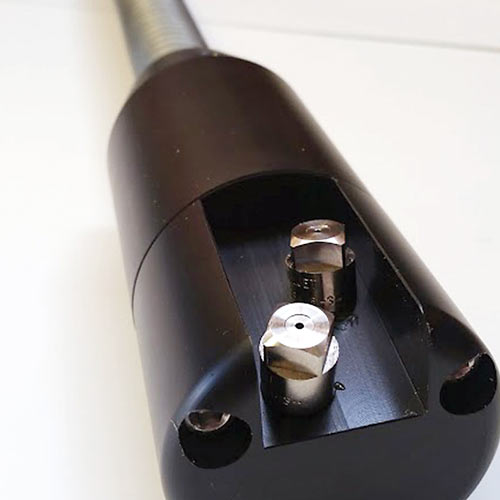
Who supplies it? Northern Dairy Equipment
What is it? Wand sprayer
Pre or post milking disinfection? Pre and/or post
How does it work? Fixed point automatic “wand” or arm goes in and out of bale at one specific point on rotary. Speed of rotary determines speed of arm. Dual nozzles spray forward and backwards as wand goes in and out.
Parlour type: External rotaries
Can it be retrofitted? Yes
How long does it take? 2-3 seconds/cow (can be adjusted)
Average disinfectant use per cow: 20ml/cow/milking
Can you use any disinfectants with it? Yes
Warranty: 12 months
Cost (excl VAT): £15,500
Key considerations for system type: Can be hit-and-miss if cow is not in right position. Platform leg spreaders recommended for accuracy of spraying.
Contact: dairy-equipment.co.uk Tel: 01772 739403
Moojet
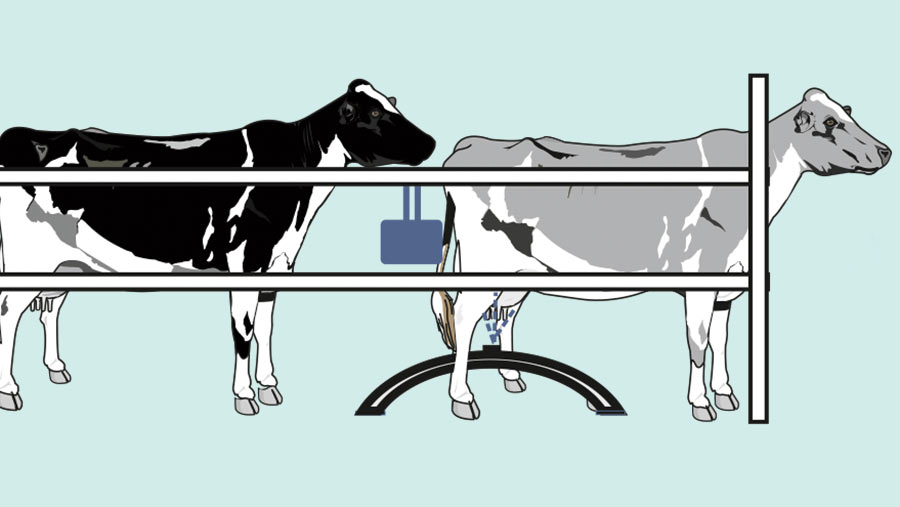
Who supplies it? Cotswold Milking Systems
What is it? Walkover sprayer
Pre or post milking disinfection? Pre or post (most use for post)
How does it work? Sprayer located in race on entry and/or exit to parlour. Light beam locates cow and automatically sprays when cow walks over nozzles.
Parlour type: Any
Can it be retrofitted? Yes
How long does it take? Works at cow exit speed
Average disinfectant use per cow: 30ml/cow
Can you use any disinfectants with it? Yes
Warranty: About 12 months
Cost (excl VAT): £2,500-£3,000 installed
Key considerations for system type: Low accuracy. Uses a lot of spray. Risk of nozzle getting blocked by slurry. Position is key to avoid cow flow jams.
Contact: cotswold-dairy.co.uk Steve Gibson Tel: 07725 241938
Questions to ask before buying
Mr Ohnstad suggests looking at the following when choosing a product:
- Why you are installing them? If it is to improve mastitis and somatic cell counts, address other areas such as environment and dry cow management first. Don’t expect an automated system alone to produce improvements in udder health.
- All technologies are a significant investment. Understand the ongoing running costs in terms of labour and maintenance.
- Work out return on investment on all systems in terms of labour. Be realistic: if you’re putting in a robot in to save a labour unit for post spraying, are you actually saving a person? That same person could be needed for selecting out cows and washing soiled milking units.
- Ask manufacturers for evidence of efficacy and coverage.
